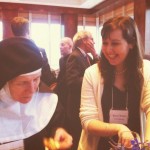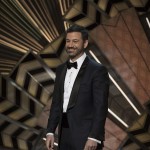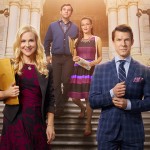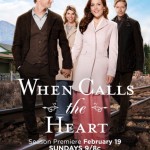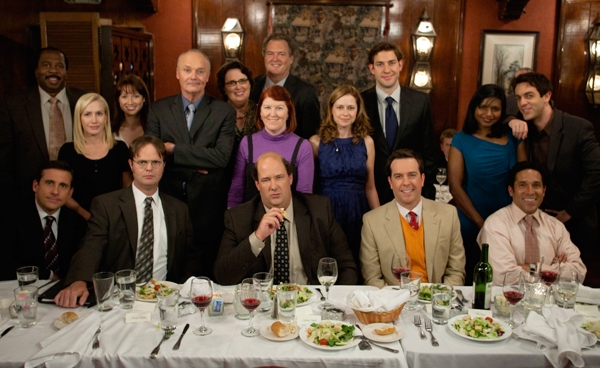 “There is a crack / A crack in everything / That’s how the light gets in.”
“There is a crack / A crack in everything / That’s how the light gets in.”
Leonard Cohen
In the history of TV sitcoms, “The Office,” which ended its nine season run on May 16, certainly had its share of cracked characters. But the show proved the last part of that Leonard Cohen lyric as well, especially in the series finale, which made it abundantly clear how much light had seeped into those cracks.
I hadn’t watched “The Office” for a couple of years, but after seeing some rave reviews of the finale from Facebook friends, I decided to revisit the Dunder Mifflin crowd to see how they ended up. I was glad I did because, in my opinion, the episode rivaled the end of M*A*S*H for humor and poignancy.
For the uninitiated, “The Office” followed the lives of the employees at Dunder Mifflin, a paper distribution company in Scranton, Pennsylvania, using the narrative structure that someone was shooting a documentary about them. The main players were well-meaning-but-buffoonish boss Michael Scott (Steve Carrell), his comically-rigid assistant Dwight Schrute (Rainn Wilson), and the “everyman/everywoman” characters of salesman Jim Halpert (John Krasinski) and receptionist Pam Beasley (Jenna Fischer), whose unrequited romance gave the show’s early seasons a romantic hook.
Laughter, of course, is the key to any sitcom, and Michael Scott provided plenty of those moments in terms of naively saying inappropriate things (“I swallowed all your ideas. Now I’m going to digest them and see what comes out the other end”), intentionally saying inappropriate things (“That’s what she said”), and doing things like burning his foot while grilling bacon on a George Foreman Grill in bed (Season Two, “The Injury”).
As I’ve gotten older, though, I’ve come to believe that the key to a really great sitcom isn’t just comedy; it’s empathy.
During an interview on “Christopher Closeup” many years ago, actor Carroll O’Connor discussed the genesis of “All in the Family.” It was based on a British show which tended to make its characters funny, but one-dimensional.
When creating the American version, both O’Connor and creator Norman Lear knew they would make Archie Bunker prejudiced, but they also wanted to make him a real person that viewers could, at times, understand and relate to. So as much as we laughed at or looked down on Archie, we could also connect with him on a human level when he comforted his daughter Gloria after she suffered a miscarriage – or felt scared when his wife Edith endured a cancer scare. Archie Bunker certainly had his flaws, but he was portrayed as a three-dimensional person and a reminder to look beyond the surface before we fully judge people.
Other great sitcoms, ranging from “M*A*S*H” to “Everybody Loves Raymond” to “The Middle,” have been able to seamlessly weave those elements of comedy and empathy into their characters and storylines. It was something “The Office” excelled at also, and I still remember the first time I realized that.
I didn’t start watching the show until the third season when I finally decided to see what all the fuss was about. The episode that made an impression on me was titled “Business School” (written by Brent Forrester and directed by Joss Whedon). It involved Michael giving a talk at a business school at the request of Dunder Mifflin employee, Ryan (BJ Novak). Despite living in an increasingly computerized world, Michael insists to the students that paper will always be essential. When Michael finds out that Ryan told the class that Dunder Mifflin will be obsolete in a few years, he’s genuinely hurt and upset. He can’t believe that Ryan would shame him in this way. That incident makes Michael super-sensitive to the idea that friends support one another in every way possible. That’s when he remembers Pam’s art show.
Though Pam is the office receptionist, her goal is to be an artist. She invites her co-workers to her first ever art show, but is met by a distinct lack of interest. One co-worker shows up at the event and Pam overhears him putting down her work. She’s devastated by the lack of support from the people she considered her friends, and doubts that her dreams are even achievable. Then, Michael shows up, enthusiastically praising Pam’s work and even buying one of her pieces to hang on the wall next to his office. She tearfully hugs Michael in appreciation.
Like viewers, it was easy for Pam to feel superior to Michael when he acted like a nut. But this scene provided a moment of kindness and connection that raised it above a show that was simply trying to get laughs. This was one broken person embracing another, and it made the show feel like it was grounded in a little bit of truth.
Carrell left “The Office” at the end of Season 7 in order to be with Holly, his one true love. Pam and Jim got married and had children over the course of the show, while other characters, like Andy Bernard (Ed Helms) and Darryl Philbin (Craig Robinson), moved on to other jobs.
I really wasn’t sure where everybody was at when I tuned in for the series finale (written by series developer and executive producer Greg Daniels). SPOILERS AHEAD!
The plot involved the characters reuniting for Dwight and Angela’s wedding. Ironically, Dwight has picked Jim to be his best man (or “bestisch mensch”) because the two have grown so close. Considering they used to do everything they could to get on each other’s nerves, that’s quite an evolution.
At a panel discussion with everyone about the Dunder Mifflin documentary which has now aired, Jim and Pam get a lot of questions about their relationship, especially in light of Jim’s history making grand romantic gestures to Pam. The audience questions whether Pam really appreciates Jim, and she responds with some hard-earned relationship wisdom: “When the documentary started airing, people on the street told me that I had a fairy tale romance. A lot of times last year, it did not feel like a fairy tale. But then it got deeper and it got stronger and much better than a fairy tale. It’s like a long book that you never want to end – and you’re fine with that because you just never, ever want to leave it.”
Another touching moment came when Erin (Ellie Kemper), the office receptionist who had been searching for her birth parents, unexpectedly meets them when they attend the panel discussion. She doesn’t understand who they are at first, until her office mates subtly make her aware. Kemper plays Erin’s realization beautifully, and the other actors look genuinely happy for her. It’s the kind of scene that, in order to make it believable instead of schmaltzy, the actors need to have a rapport that goes beyond the fact that this is just another acting job. That rapport came across here and throughout this whole episode.
That leads to a criticism of the episode that I saw from some professional critics who called it too emotionally manipulative and not funny enough. I would disagree with them on both counts. Firstly, endings tend to be less comical than beginnings and middles. The finale provided more than enough laughs and, more importantly, plenty of smiles – especially when Michael Scott unexpectedly arrived at Dwight’s wedding. Yes, the majority of characters got the happy endings they wanted. But so what? Comedies are supposed to have happy endings.
Those critics must have hated the episode’s last 10 minutes, which I found to be some of the finest writing and acting I’ve seen on television. After the wedding, all the main players reunite in the office where they spent so many years together. All these characters, whose behavior in the early seasons would cause constant eye-rolling annoyance among each other, now WANT to spend time together. As Angela says, “The honeymoon can wait until tomorrow. We wanted to hang out with you guys. When are we ever going to be together again?”
The truth behind how those connections have evolved is voiced by Creed: “No matter how you get there or where you end up, human beings have this miraculous gift to make that place home.”
More words of wisdom along those lines come from Andy, who says, “I spent so much of my time here at Dunder Mifflin thinking about my old pals, my college a cappella group. The weird thing is now, I’m exactly where I wanna be. I got my dream job at Cornell and I’m still just thinking about my old pals. Only now they’re the ones I made here. I wish there was a way to know you’re in the good old days before you’ve actually left them.”
It’s appropriate that Jim and Pam provide the most meaningful reflections about the nature of their time at Dunder Mifflin and how it was impacted by a documentary crew filming them.
Jim says, “Imagine going back and watching a tape of your life. You could see yourself change, and make mistakes, and grow up. You could watch yourself fall in love, watch yourself become a husband, become a father. You guys gave that to me. And that’s an …amazing gift…I sold paper at this company for 12 years. My job was to speak to clients, on the phone about quantities, and types of copier paper. Even if I didn’t love every minute of it, everything I have, I owe to this job. This stupid, wonderful, boring, amazing job.”
Pam adds, “I thought it was weird when you picked us to make a documentary. But, all and all, I think a paper company like Dunder Mifflin was a great subject for a documentary. There’s a lot of beauty in ordinary things. Isn’t that kind of the point?”
As Pam leaves the office for the final time, she takes with her the drawing that Michael had bought from her art show and hung there. Like most endings, it was tinged with sadness, but also gratitude for the time these people had spent together. And Pam’s final comment bears repeating because it’s a truth, grounded in the virtue of gratitude, that we can all apply to our lives:
“There’s a lot of beauty in ordinary things. Isn’t that kind of the point?”
RELATED: Rare Glimpse of True Love: Last Season of The Office by Nancy Anderson French

